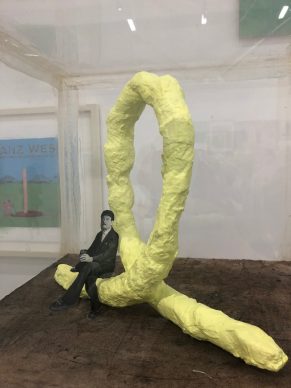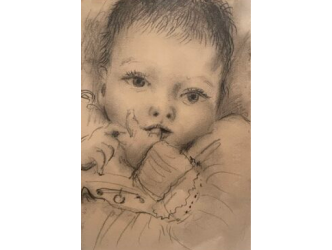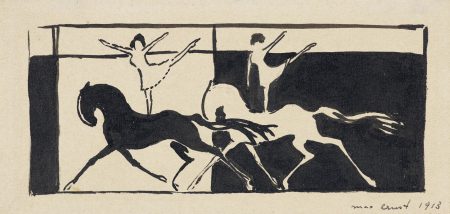Imagine a world where the most popular slogan among young people is “peace and love”, a world where chemically induced paradises are the norm, where the orderly and materialist virtues of the capitalist middle classes no longer reign, where the spirit of sharing is embraced and where Freud’s legacy is seen as a major influence.
This world has indeed existed and the artist Franz West (1947-2012) is one of its most celebrated offspring.
The Centre Pompidou is dedicating a substantial retrospective to the Viennese artist with 190 artworks, which unfortunately seem slightly cramped within the allotted exhibition space.
Franz West practised a kind of trash art, or to put it another way, a form of creation that was post-Dada but dirtier; an art of immense freedom (it was neither beautiful, applied, nor academic) often in collaboration with other artists. His creations may be of a deliberately difficult aesthetic, but today Franz West is an artist who is celebrated by major museums around the world.
Franz West’s father was a coal dealer and his mother was a dentist. She influenced him a great deal, to the extent that he adopted her family name.
He had no formal training as an artist because he left school at 16 after having attended a performance by the Viennese actionists, known for their taste for blood and acts of violence upon the body.
His whole oeuvre is inspired by psychology and behavioural studies.
David Zwirner, the famous mega-gallerist, opened his New York gallery space in 1993 with an exhibition of West’s work. He recounts the experience:
As a preliminary step, Franz West often made sculptures out of metal rods and plaster, a material he was familiar with due to his mother’s profession.
The most famous examples of these are the “Passstücke”, sculptures that were able to be manipulated and transported. His friend, the Austrian art historian and professor at the Kunstakadem ie in Dusseldorf Robert Fleck, describes these plaster protuberances as “neuroses made visible”.
When Documenta in Kassel asked him to take part in the prestigious show in 1992 he didn’t have any ideas for what to do, so he asked them what furniture was missing.
He was told they were missing some seats for the auditorium. This led him to create 72 highly uncomfortable carpet-covered sofas.
They were inspired by Roman couches: “he liked to observe people in situations where they were constrained in some way,” his friend adds. The seats were covered in kilim material; a direct allusion to the couch used by Freud’s patients.
Robert Fleck goes on to recount some of his personal memories of Franz West:
In the “thumbing the nose” category, of which West was a champion, from the 2000s onwards he created monumental sculptures depicting crudely designed giant phalluses or turds, often in pastel colours.
“A parody of the old statues in European squares, but also of artworks by Henry Moore and Alexander Calder that can be seen in public spaces,” explains in the catalogue Mark Godfrey, curator of the exhibition at the Tate.
“He’s an artist who invented new forms in sculptures,” comments the curator of the Pompidou exhibition, Christine Macel.
Last but not least it mustn’t be forgotten that, contrary to what’s happening in the current contemporary art landscape, West was a great proponent of humour and levity.
Until 10 December. Paris. www.centrepompidou.fr
In London: 20 February– 2 June 2019. www.tate.org.uk
Support independent news on art.
Your contribution : Make a monthly commitment to support JB Reports or a one off contribution as and when you feel like it. Choose the option that suits you best.
Need to cancel a recurring donation? Please go here.
The donation is considered to be a subscription for a fee set by the donor and for a duration also set by the donor.




















